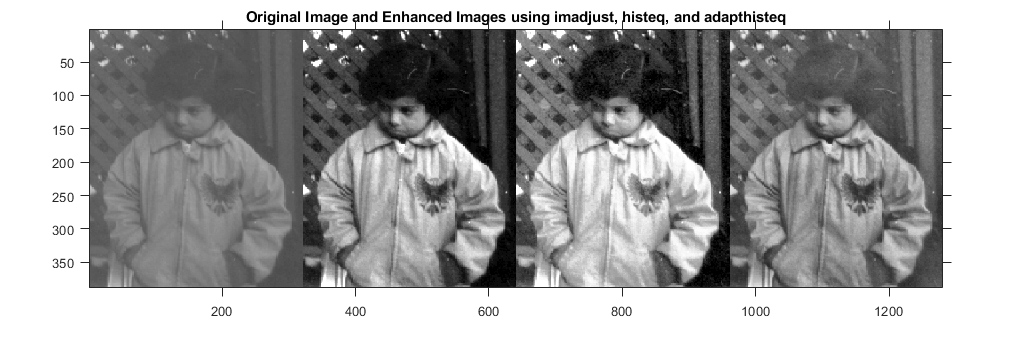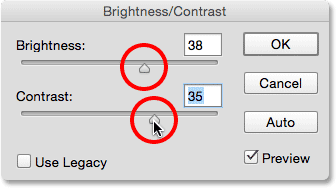What Is Image Enhancement & Its Effect On Machine Vision

Imagine trying to drive a car in dense fog.
Your visibility is limited, making it hard to see what's ahead.
Now, picture someone handing you a pair of glasses that cut through the fog, suddenly revealing the road and obstacles clearly.
This is what image enhancement does in the world of machine vision.
The global machine vision market was valued at USD 18,475.6 million in 2023 and is expected to grow at a CAGR of 12.7% from 2024 to 2030.
It’s evident that the demand for accurate and reliable visual data is skyrocketing.
However, many machine vision errors are due to poor image quality.
Therefore, if your machines are struggling to interpret visual data accurately, your operations might be at risk. Image enhancement tools help you transform and clarify images, ensuring your systems perform at their best
In this blog post, we’ll explore what exactly Image Enhancement is and how different types of Image Enhancement techniques affect Machine Vision Systems.
If you’re involved in the technical field, then you may have heard of image enhancement and its benefits for machine vision.
But first, let’s explore what exactly image enhancement is.

What is Image enhancement?
Image enhancement is the technique of enhancing an image's visual appeal. It entails changing an image's visual elements to make it more aesthetically pleasing or to more effectively deliver the message.
In simpler terms, it’s about tweaking images so that the important features stand out, and any noise or irrelevant data is minimized.
From contrast to brightness, color balance, and sharpness, a variety of different methods are used to improve an image's visual quality.
It can be applied to a number of images, including photographs, medical images, and satellite images. The best strategy for image enhancement depends on the specifics of the image and the desired outcome.
Different methods to perform Image enhancement
The best way to utilize image enhancement will depend on the particular qualities of the image and the intended results.
There are many different methods and techniques available. The common techniques for improving images include:

- Adjusting the contrast: Adjusting contrast involves changing the range of light and dark tones in an image to make highlights and shadows more pronounced or to bring out hidden details.
This can be achieved using methods like histogram stretching or equalization. - Adjusting the brightness: This entails altering an image's overall brightness or blackness. Techniques like tone mapping and gamma correction can be used to achieve this.
- Adjusting the color balance: In order to achieve a more natural or aesthetically acceptable color balance, this includes changing the relative proportions of the basic colors in an image.
Techniques like color correcting and white balance can be used to achieve this. - Sharpening: harpening improves the clarity and definition of an image by making the edges and fine details more distinct. Techniques like frequency domain filters and unsharp masking can be used for this.
- Filtering: Filtering is the process of performing a mathematical operation on an image in order to draw attention to specific details or eliminate unwanted elements.
There are various types of filters available to enhance images, including low pass, high pass, and edge detection filters. - Resampling: Resampling includes adding or subtracting pixels to alter the quality of an image. This can be helpful for enhancing an image's sharpness or clarity or for scaling it to meet a particular aspect ratio.
- Deblurring: Deblurring is the process of taking away blur or noise from a picture in order to enhance its sharpness and clarity. Techniques like deconvolution or picture restoration are used for this.
Now, let's take a look at some of the most prevalent applications of image enhancement.
Applications of image enhancement
Image enhancement isn’t just a fancy term, it has real-world applications that can dramatically improve the effectiveness of machine vision systems across various industries:
- Photography: By changing a photograph's contrast, brightness, color balance, or sharpness, image enhancement can enhance its aesthetic appeal.
- Medical Imaging: In the healthcare industry, images such as X-rays, CT scans, and MRIs, image enhancement can be utilized to enhance the visibility of details. This could aid in more accurate medical problem diagnosis.
- Aerial photography: The quality and contrast of aerial photographs can be improved via image enhancement, which makes it simpler to view and understand details on the land.
- Forensic Images: To recognize criminals or acquire evidence, forensic photos like fingerprints or footage from security cameras can be enhanced using image processing techniques.
- Military and defense: To help detect potential threats or collect intelligence, image enhancement can be employed to enhance the contrast and resolution of photos captured by military drones or satellites.
- Astronomy: By enhancing the contrast and resolution of telescope photographs, astronomers can better view and understand the finer aspects of celestial objects.
- Industrial investigation: Image enhancement can be applied to photographs captured during industrial examinations, such as evaluating welds or looking for flaws in items, to enhance the visibility of details.
- Environmental Monitoring: Image enhancement has the potential to increase the quality and contrast of photographs captured when monitoring the environment, such as looking for oil spills or keeping an eye on vegetation.
Process for doing Image Enhancement
There are many different ways and techniques for image enhancement. The general steps that are usually taken throughout the process of image enhancement are listed below:
- Preprocessing: In this phase, any noise or artifacts that could interfere with the enhancement process are removed from the image in order to prepare it for enhancement. Techniques like noise reduction or filtering can be used to achieve this.
- Analysis: The properties of the image are examined in this step to ascertain which elements need to be improved. Analyzing the image's contrast, brightness, color balance, or other visual elements may be necessary for this.
- Enhancement: To increase the image's visual quality, use the proper enhancement techniques in this phase.
This could involve making adjustments to the image's contrast, brightness, color balance, or sharpness, as well as adding filters to accentuate specific details or eliminating unwanted elements. - Post-processing: In this last stage, any artifacts or distortions that may have been generated during the enhancement process are examined in the enhanced image.
Necessary adjustments are then made to correct these issues, resulting in the final, improved image.
How does Image enhancement affect machine vision?

Image enhancement plays a crucial role in elevating the performance of machine vision systems by refining the transparency and clarity of images. Here’s how it works and why it’s beneficial:
- Improving Algorithm Accuracy: Machine vision systems rely on computer algorithms to analyze and interpret images.
By enhancing the image, these algorithms can more easily identify and extract relevant features, leading to more accurate and reliable results. - Quality Assurance in Manufacturing: In a quality control setting, enhanced image quality makes product defects or blemishes more visible.
Boosting the image's brightness and sharpness allows the machine vision system to detect and classify flaws with greater precision, ensuring thorough and dependable inspections. - Object Detection and Tracking: For systems focused on object detection or tracking, image enhancement helps in distinguishing between similar objects or features.
Adjustments like color balance and filters highlight specific details, improving the system's ability to differentiate and follow objects as they move across the image.
Overall, image enhancement transforms machine vision systems by simplifying data extraction and decision-making, leading to significant improvements in performance and accuracy.
Conclusion
As we’ve explored, image enhancement is a crucial tool for improving the visual quality of images, making them more effective for machine vision tasks.
Whether you're running a manufacturing business striving for flawless quality control, working in medical imaging where precision is paramount, or involved in environmental monitoring where clarity can mean the difference between detecting a problem or missing it, image enhancement is a game-changer.
Investing in advanced image enhancement tools can solve these problems. By improving the clarity and detail of your images, you’ll enhance the performance of your machine vision systems, leading to more accurate results, increased efficiency, and a stronger competitive edge.
Don’t let poor image quality hold your operations back—consider investing in image enhancement solutions to transform the way you handle visual data.
If you’re interested in learning more about image enhancement or implementing it in your own projects, be sure to check out our other blog posts on the topic.
FAQs
1. What is image enhancement?
Image enhancement is the process of improving the quality and information content of original data before processing.
Common practices include contrast enhancement, spatial filtering, density slicing, and FCC.
2. What are the two objectives of image enhancement?
The aim of image enhancement is to improve the interpretability or perception of information in images for human viewers, or to provide `better' input for other automated image processing techniques.
3. What is medical image enhancement?
Image enhancement improves the visual quality of image, helps the clinician in his decision and thus saves the patients' lives.
Histogram is a common tool for improving contrast in medical imaging.
Book our demo with one of our product specialist
Book a Demo
